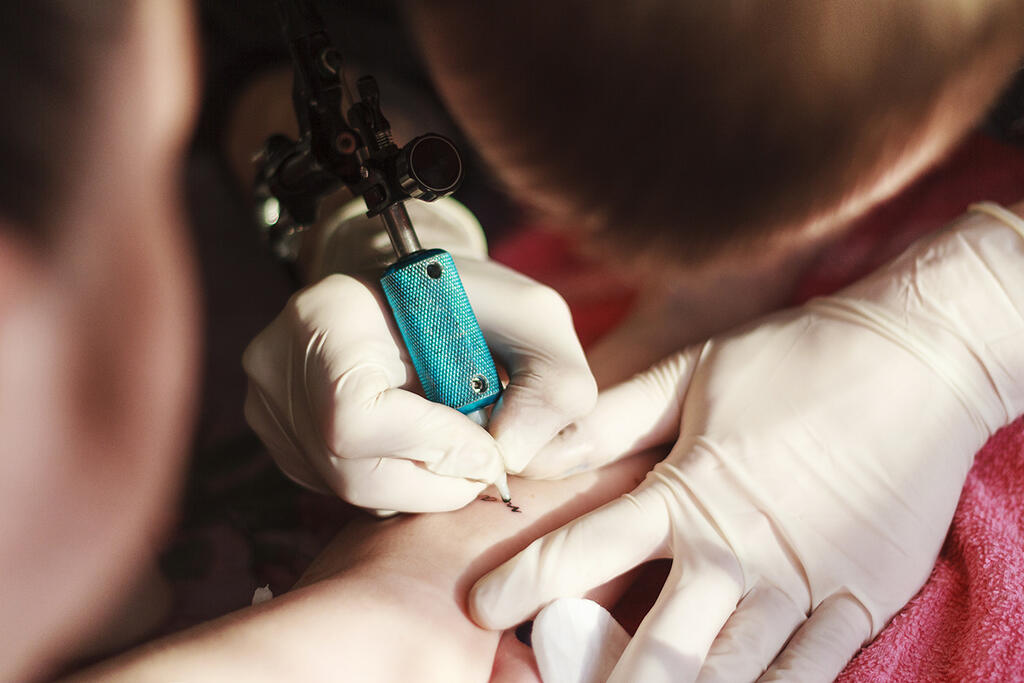Tattoos are becoming increasingly common in our society. A 2023 survey conducted in the U.S. found that 32% of Americans have at least one tattoo. The survey indicated that the most common motivation for getting a tattoo is to commemorate a significant person or event in the individual's life.
Beyond the personal narrative conveyed by each tattoo, there is a no less compelling story happening beneath the skin, with the immune system at its focal point. So what actually occurs in our body when we undergo tattooing?
Skin deep
Your skin is the largest organ in your body, covering its entire surface and acting as the primary defense against disease vectors, UV radiation, hazardous chemicals, and injuries. It comprises three layers: the outer epidermis, the middle dermis, and the inner hypodermis.
During the tattooing process, needles puncture and penetrate the epidermis and inject ink into the dermis, killing tens of thousands of cells along the way. When the needle injects the ink, bacteria also penetrate the skin. Even when proper sterilization and a hygienic environment are observed, some bacteria survive and enter the body. At this stage, the immune system must work hard to repair the damage and combat potential infections.
But the story doesn’t end here. The ink used for tattoos, which contains pigments (dyes) and a carrier solution, is made of substances foreign to the body. When these are injected into the dermis, the real battle begins: hordes of immune cells rush to the area to identify and eliminate the intruders. This counterattack is managed by immune cells known as macrophages, which play a crucial role in our innate immune system and act as the first line of defense against invaders.
Initially, macrophages try to engulf the foreign intruders and neutralize them with an acidic environment. While the acidity impacts the bacteria, it does not affect the ink substances. While macrophages can engulf small ink particles, larger ones elude them, prompting the immune system to adapt and change its strategy. Unable to eradicate the foreign agents, it focuses on containment, preventing their dissemination throughout the body.
Additional macrophages arrive at the site and encircling the large particles and trapping them in place. This response effectively fixes the tattoo for the long term. Even as macrophages die over time, they are replaced by younger counterparts that retrap the ink particles. Occasionally, tiny ink particles manage to escape, causing the tattoo to gradually fade and its outlines to blur over time.
One in four
What happens if we want to remove a tattoo? Twenty-four percent of survey respondents admitted that they regret getting a tattoo. The common solution in this case is laser treatment, during which laser beams heat the ink particles until they break down into smaller pieces, and kill the macrophages containing or surrounding the ink. Some particles manage to break free and migrate, but new macrophages quickly arrive and try to trap the remaining particles in the area.
Typically, achieving the desired result necessitates multiple treatments - usually between 6 and 12 sessions - depending on factors such as the size and location of the tattoo and the colors of the ink. Even after completing the treatments, a hint of the tattoo may linger, either due to stubborn ink particles or because the ink sits too deep for the laser beams to reach and break down all the particles.
This video shows how a tattoo is removed:
In the name of art
And what about the health risks associated with tattoos? A 2010 study revealed that two-thirds of tattoo recipients developed medical complications, such as rashes and redness, and about 10% reported ongoing complications. In 2021, Israeli researchers reported that the risk of medical complications following body art, including tattoos and piercings, is three times greater when the procedure is done on the street or at home compared to a licensed studio or medical center. In the past, the main risk of tattoos was inadequate hygiene conditions. Nowadays, awareness of this issue is greater, but infections still occasionally develop in relation to tattoos —in one to five percent of cases—including local skin infections and more severe infections such as hepatitis and HIV.
Beyond hygiene concerns, tattoo ink itself can pose dangers. Contaminated ink, allergic reactions, and toxins are some of the risks associated with unregulated ink. In response, in 2022 the European Union introduced a ban on a range of hazardous substances used in tattoo inks. Conversely, in the U.S. and in many other countries, tattoo ink lacks comprehensive regulation.
A statement addressing tattoo safety published by the U.S. Food and Drug Administration (FDA) states that “The FDA has not approved any pigments for injection into the skin for cosmetic purposes.”
The immune system does all it can to protect us, but it’s important to help it as well. If you want to get a tattoo, even now that you understand how much work is required from your immune system, it is crucial to choose a clean place that maintains strict health and safety procedures. Before doing so, you should consult publications by the Ministry of Health in your country, to make an informed decision regarding where to get your tattoo.
An animated video depicting the response of the immune system to tattoos:


